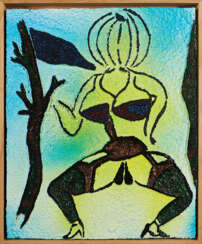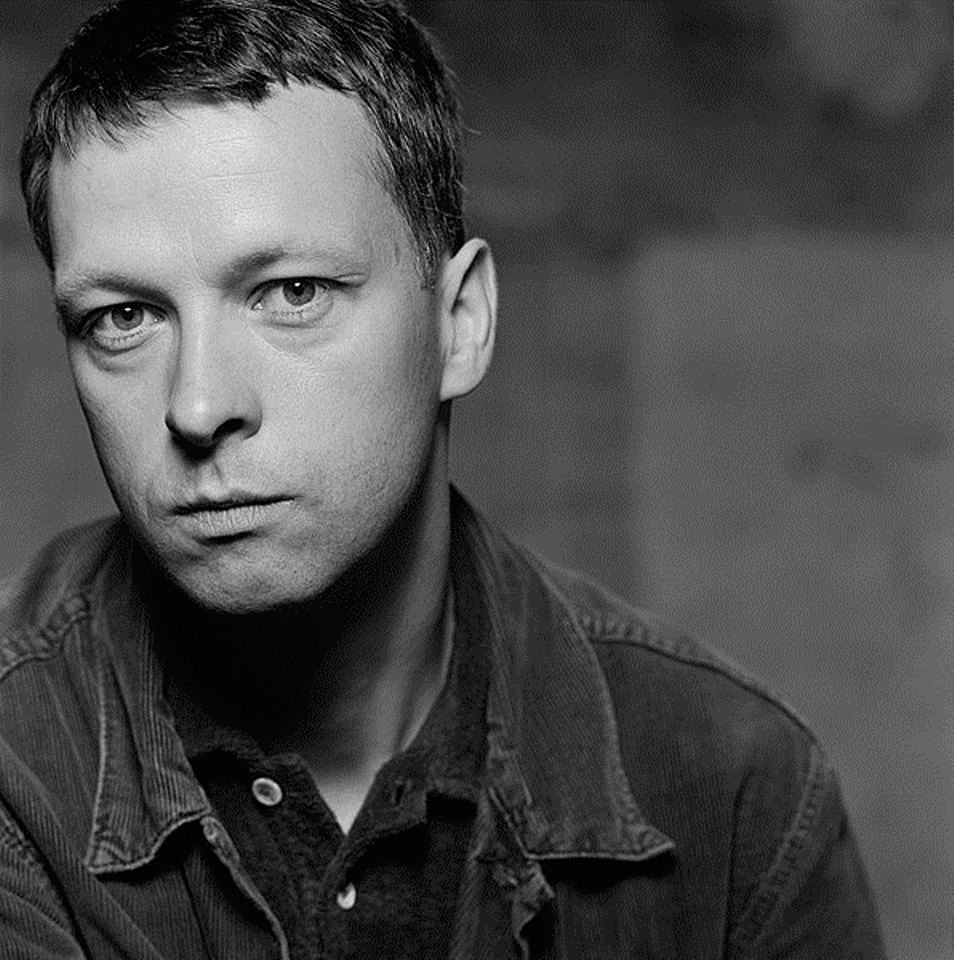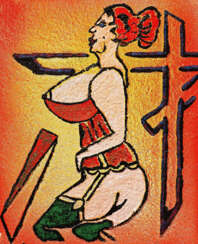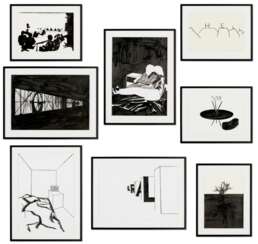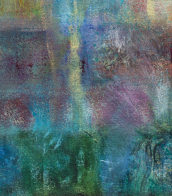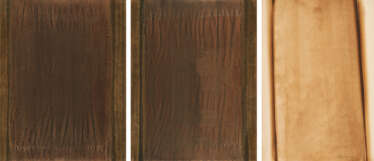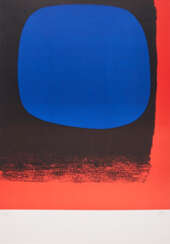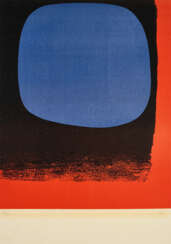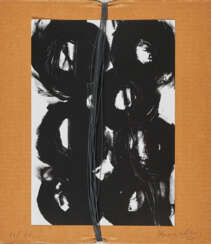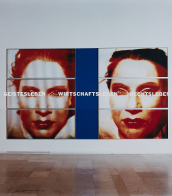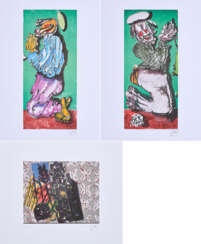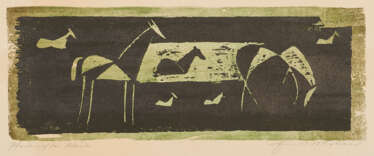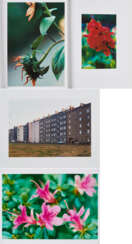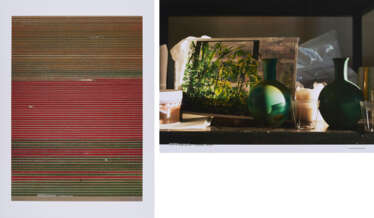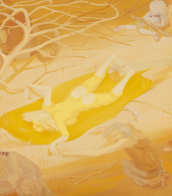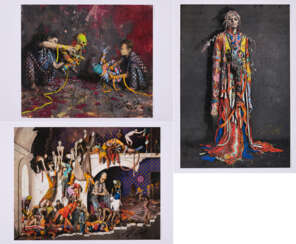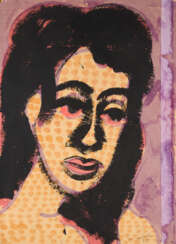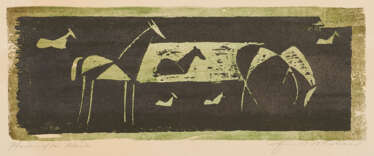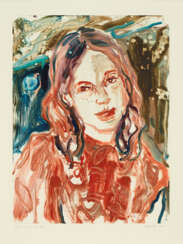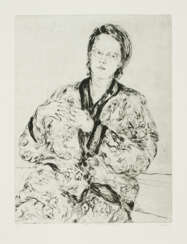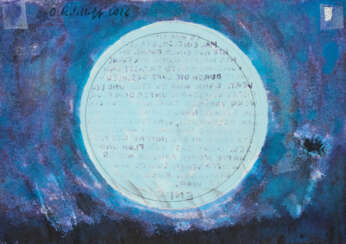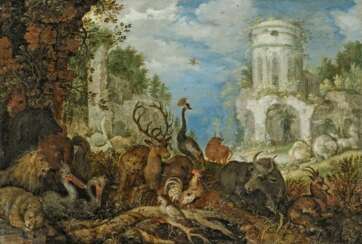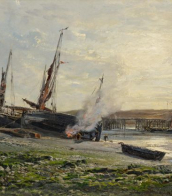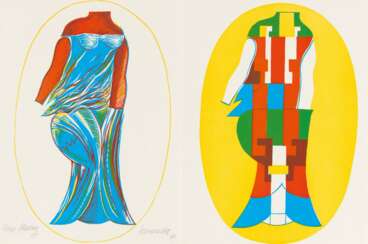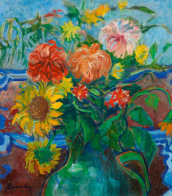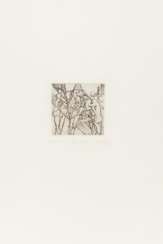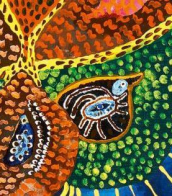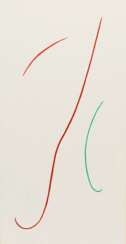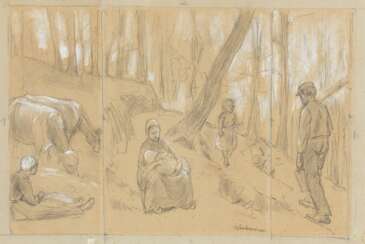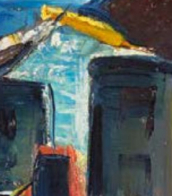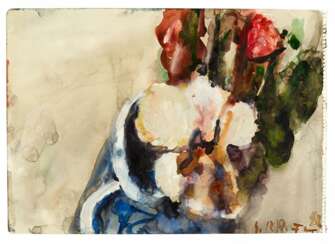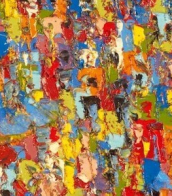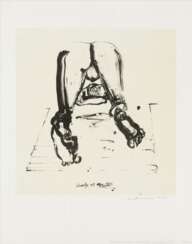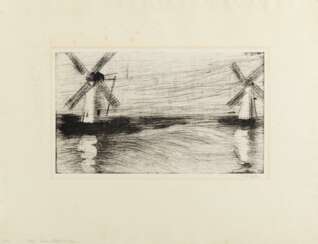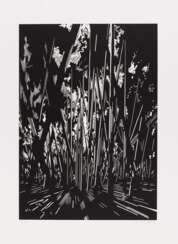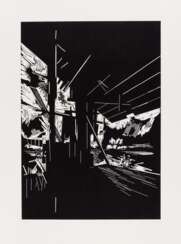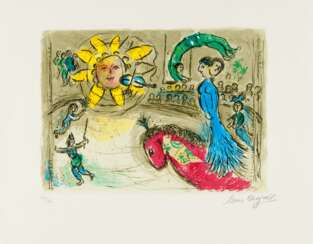5 x 42cm)
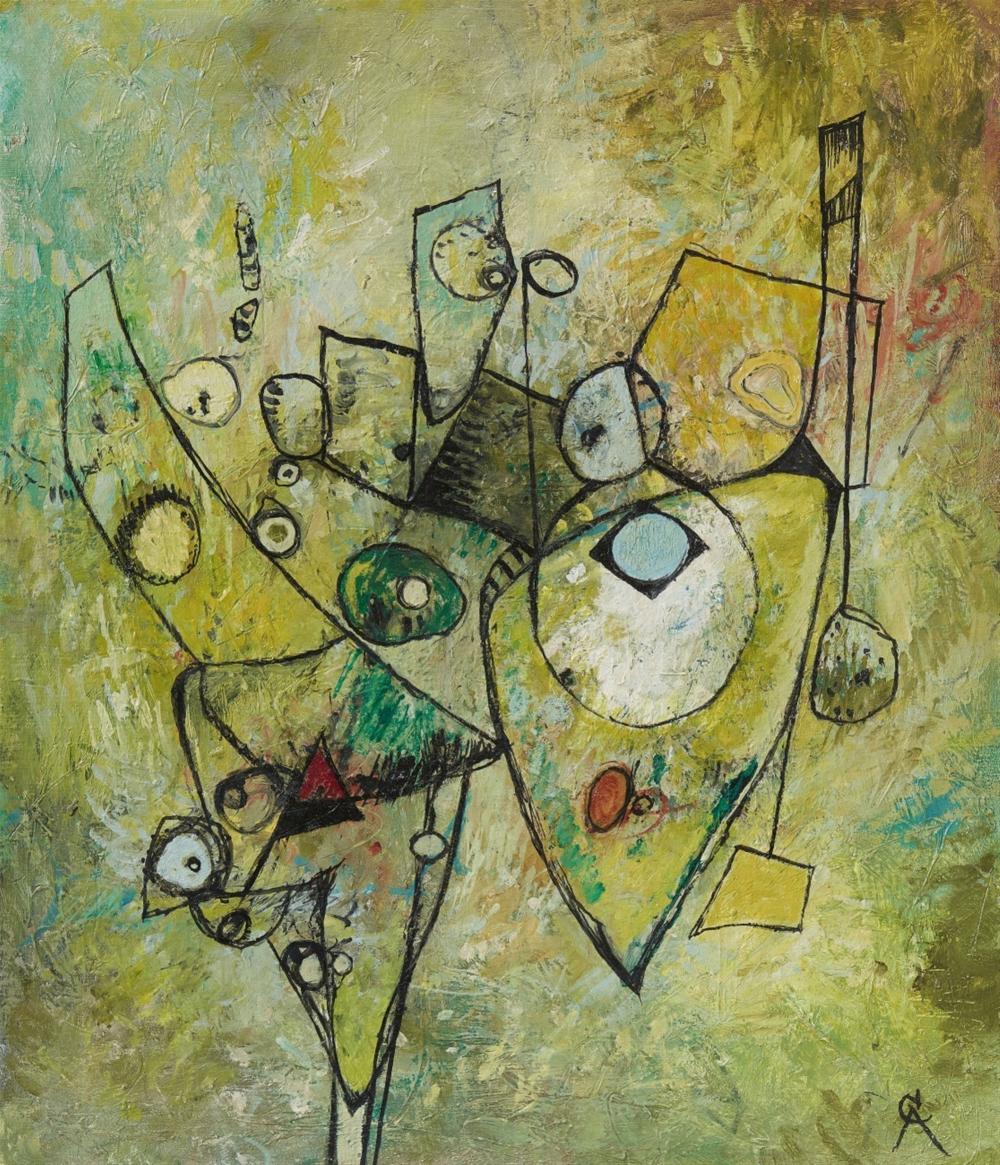
Rolf Cavael is a German abstractionist artist.
Cavael's work can be found in museums and collections throughout Europe and the United States.
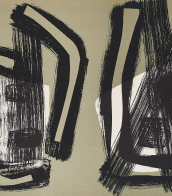
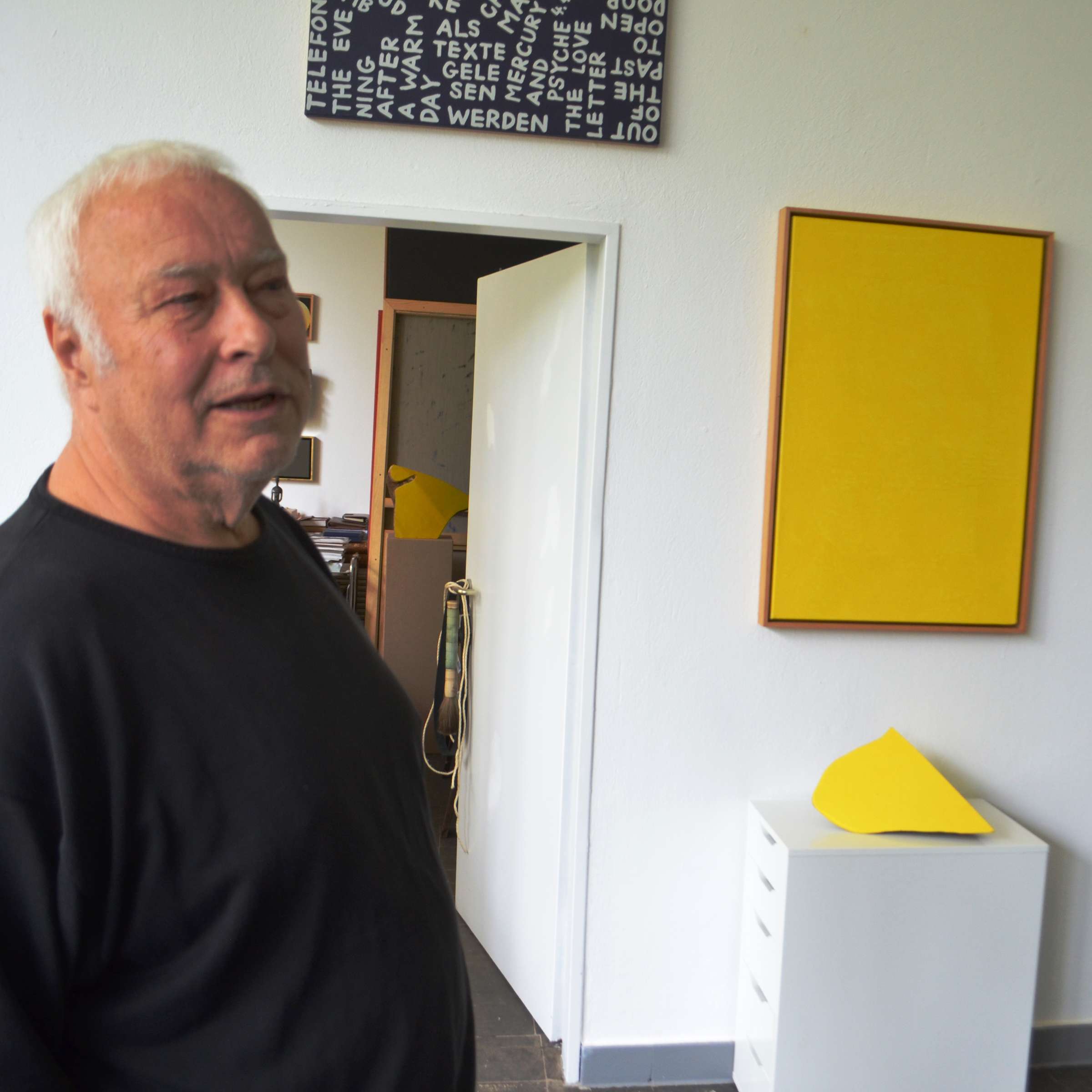
Edgar Hofschen was a German artist.
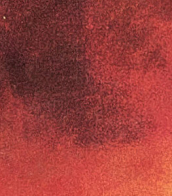
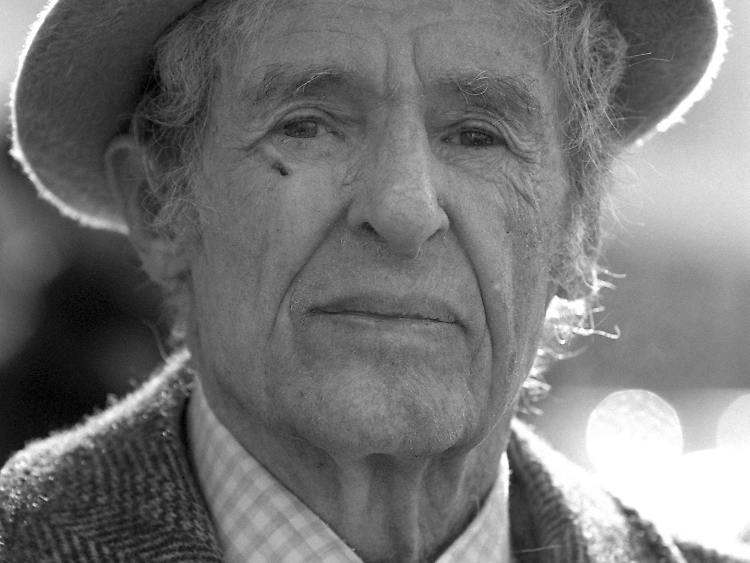
Rupprecht Geiger was a German abstract painter and sculptor. Throughout his career, he favored monochromicity and color-field paintings. For a time, he concentrated solely on the color red.
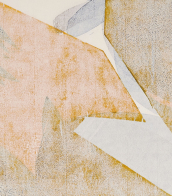

Rupprecht Geiger was a German abstract painter and sculptor. Throughout his career, he favored monochromicity and color-field paintings. For a time, he concentrated solely on the color red.

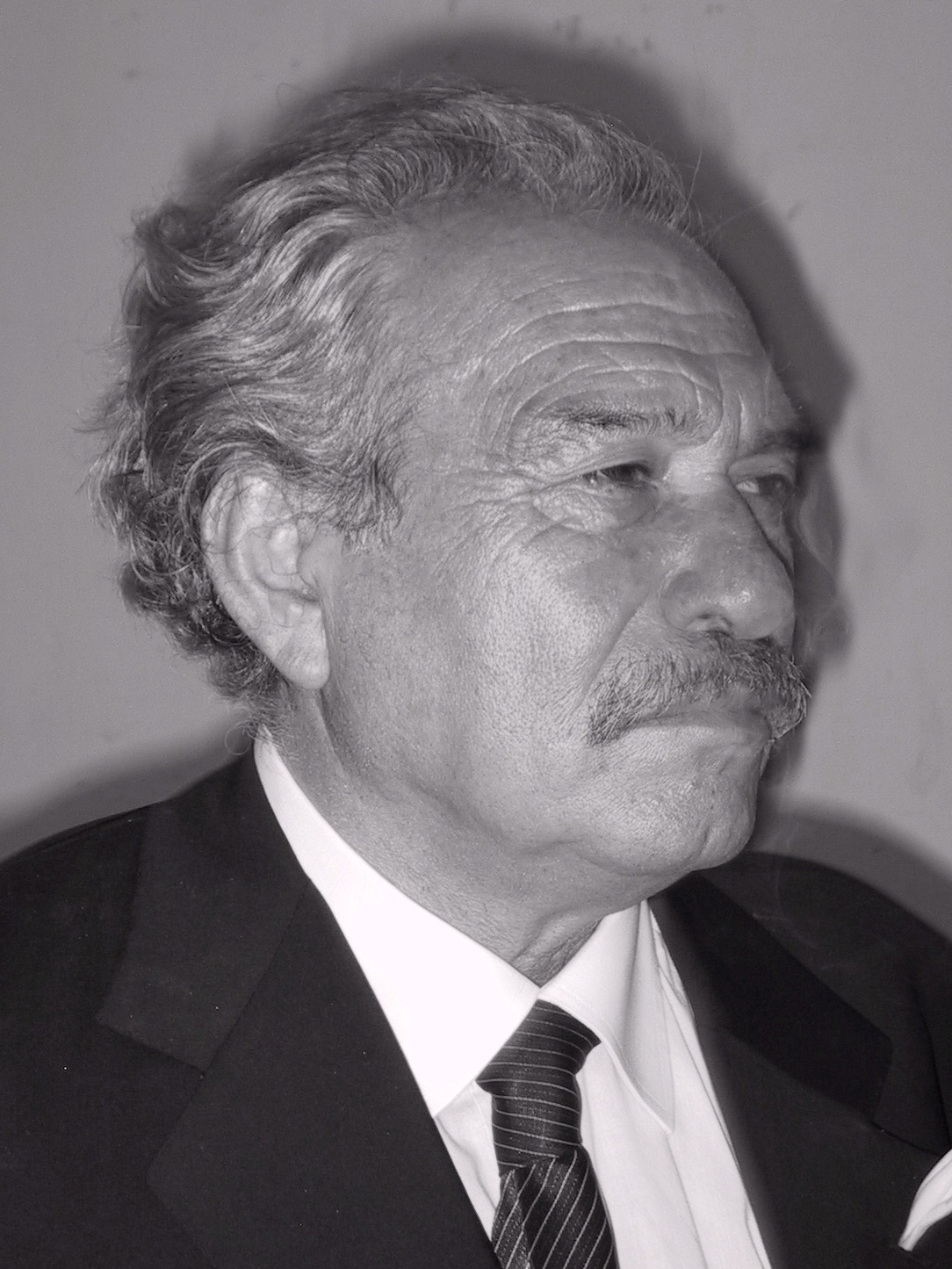
Jannis Kounellis (Greek: Γιάννης Κουνέλλης) was a Greek Italian artist based in Rome. A key figure associated with Arte Povera, he studied at the Accademia di Belle Arti in Rome.
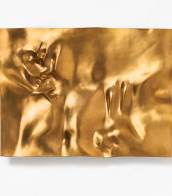
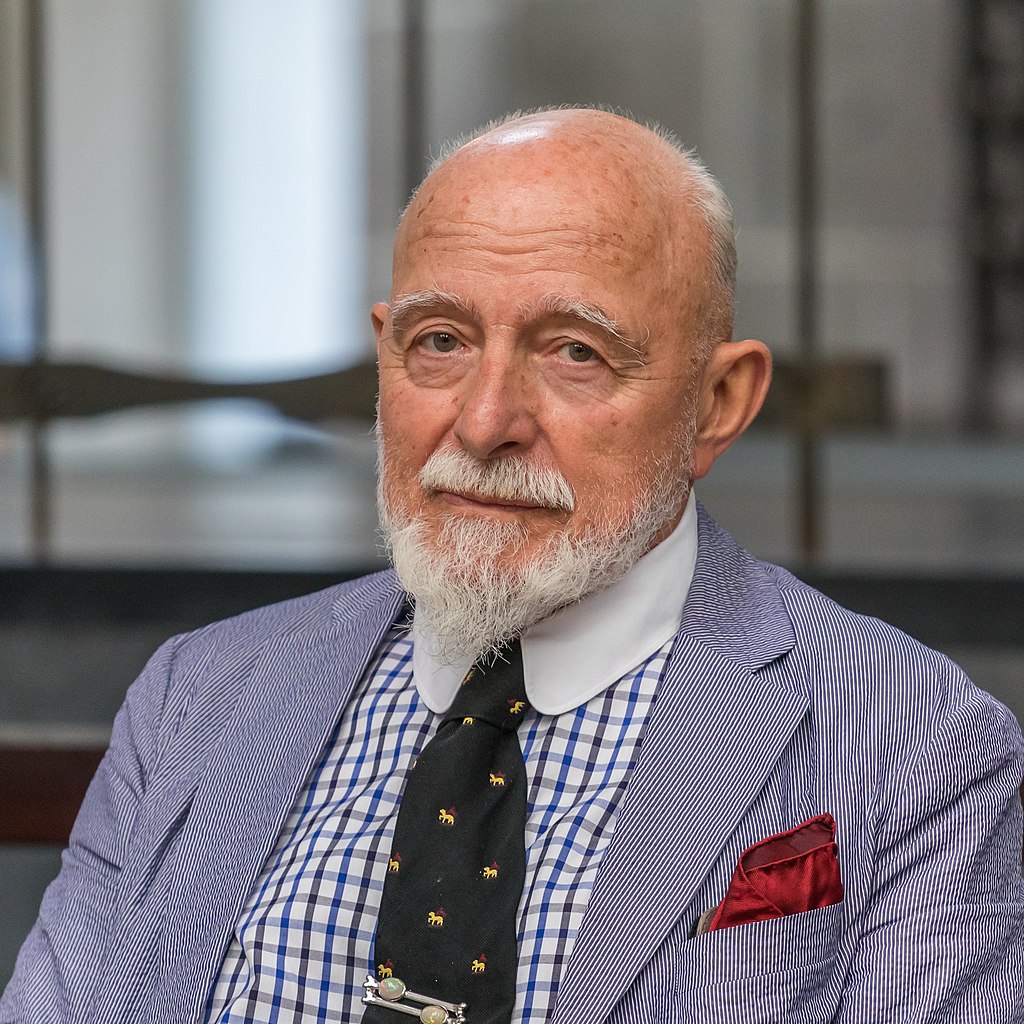
Markus Lüpertz is a German painter, sculptor, graphic artist, and writer. He also publishes a magazine, and plays jazz piano. He is one of the best-known German contemporary artists. His subjects are characterized by suggestive power and archaic monumentality. Lüpertz insists on capturing the object of representation with an archetypal statement of his existence. His art work is associated to neo-expressionism. Known for his eccentricity, German press has stylized him as a «painter prince».
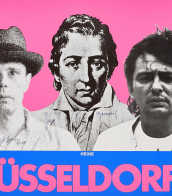
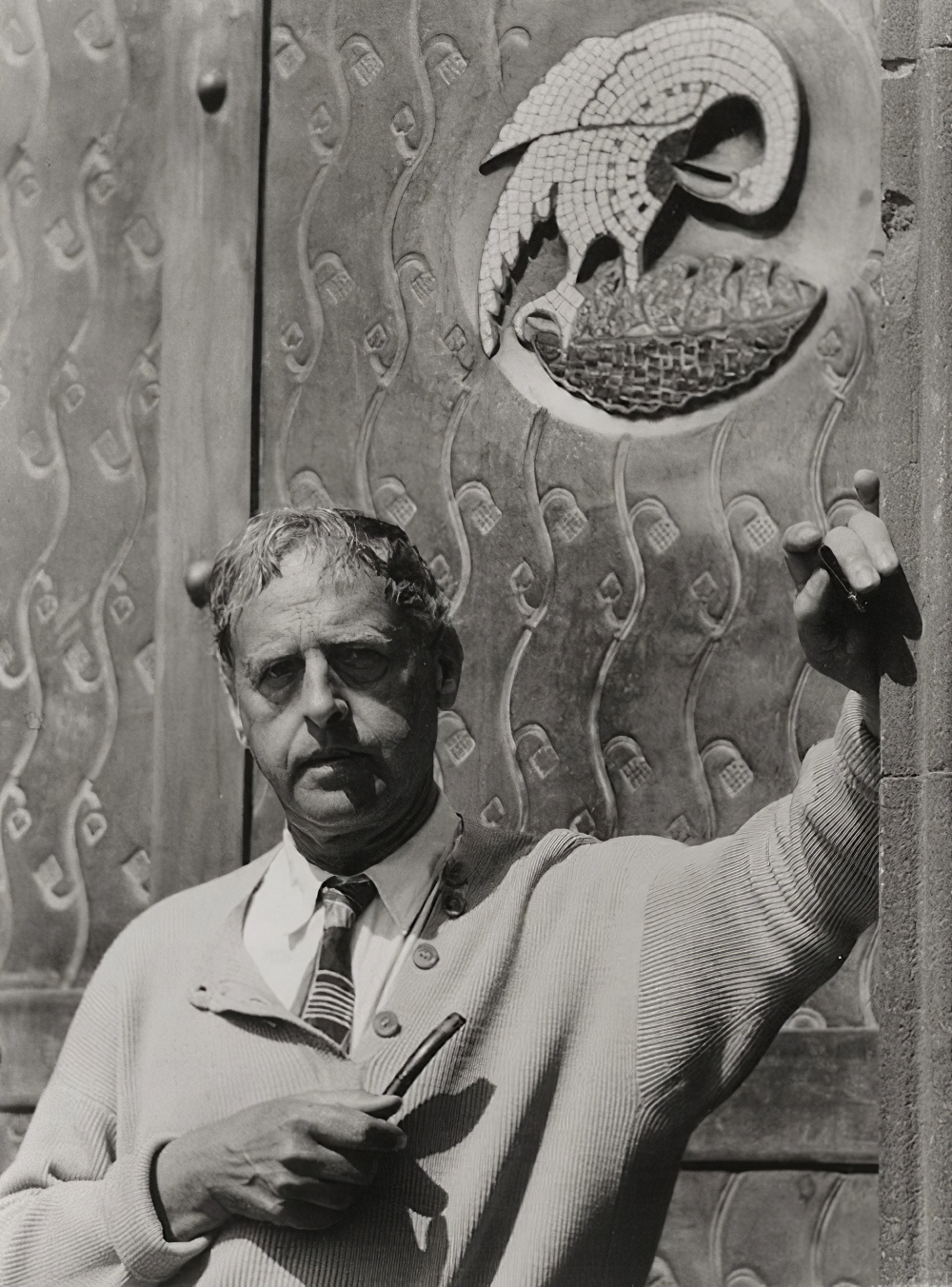
Ewald Wilhelm Hubert Mataré was a German painter and sculptor, who dealt with, among other things, the figures of men and animals in a stylized form.
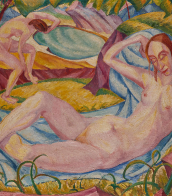
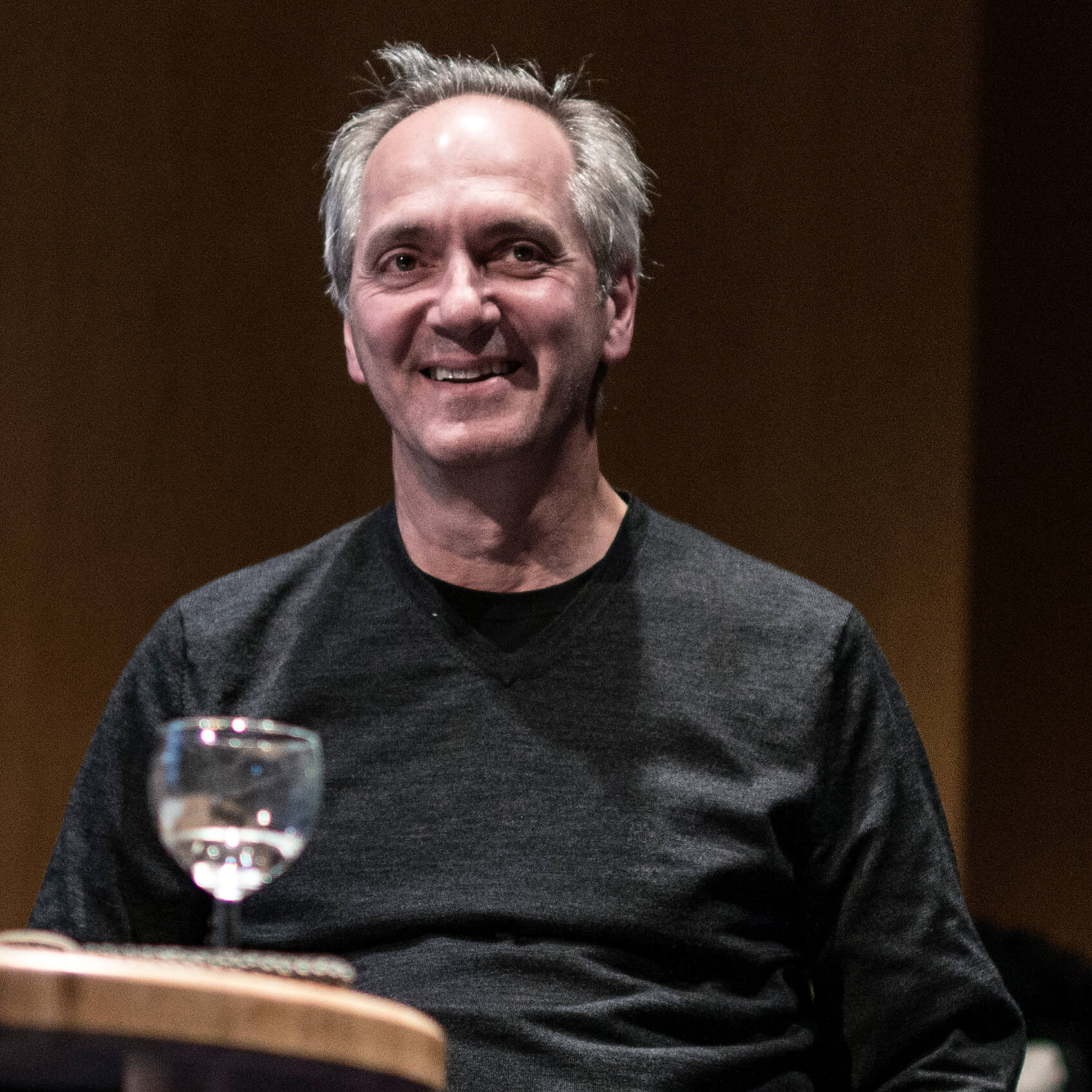
Thomas Struth is a German photographer who is best known for his Museum Photographs series, family portraits and black and white photographs of the streets of Düsseldorf and New York taken in the 1970s. Struth lives and works in Berlin and New York.
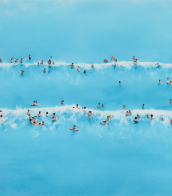
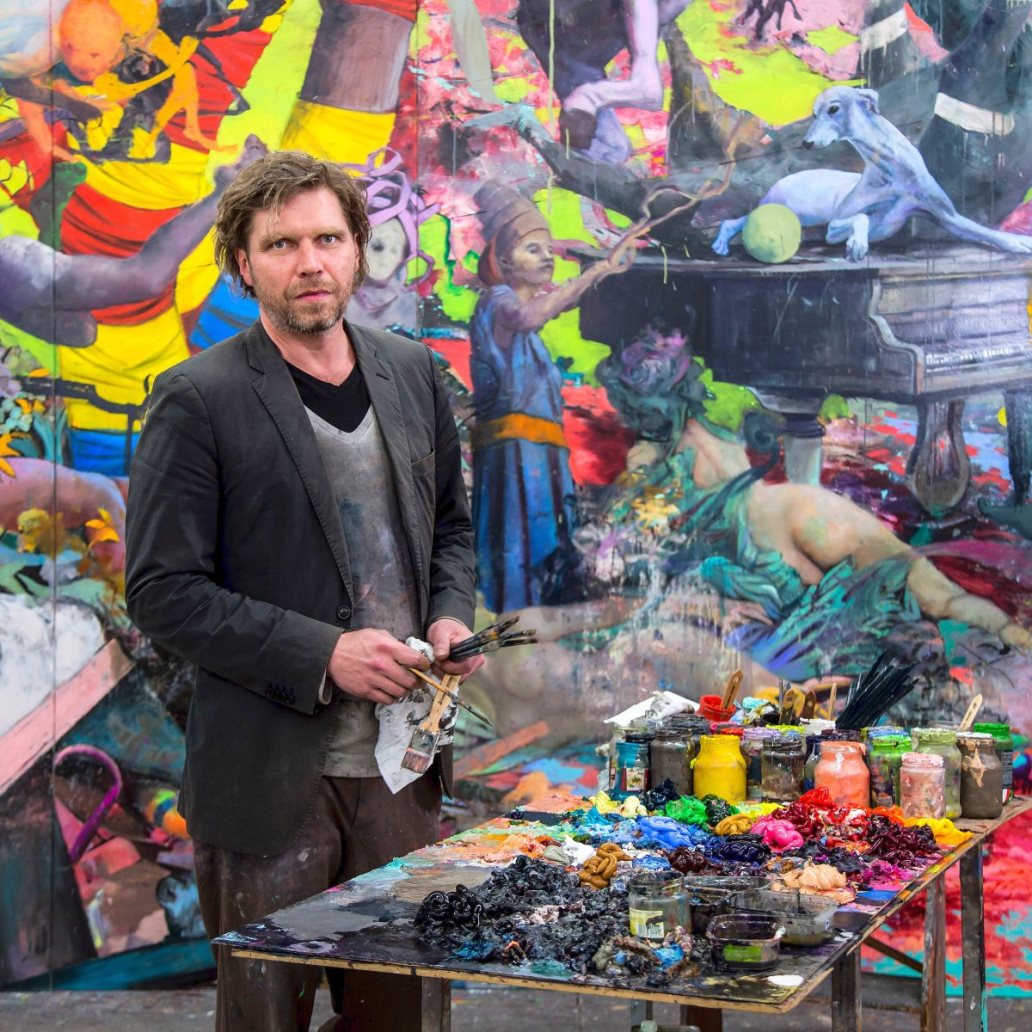
Jonas Burgert is a German figurative artist living and working in Berlin.
Jonas Burgert graduated from the Academy of Fine Arts in Berlin and studied as a graduate student (Meisterschueler) under Prof. Dieter Hacker in Berlin, and his work has been characterized from the very beginning by its vivid originality.
Burgert's paintings are filled with fantastic figures of the most unimaginable proportions. In the spaces of his panoramic paintings, one is immersed in a visual chaos of narrative layers, amidst mysterious events, strange figures and creatures. Jonas Burgert's large-format paintings are dominated by the grotesque, the bizarre and the surreal. Nightmarish zombie-like figures invade his pictorial worlds, frightening and appealing at the same time.
Since 1998 his work has been featured in numerous group exhibitions around the world, Jonas Burgert is now very successful and his works are very willingly acquired by many galleries.
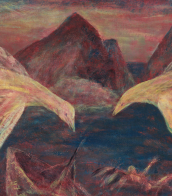

Ralf Winkler, alias A. R. Penck, was a German painter, printmaker, sculptor, and jazz drummer. A neo-expressionist, he became known for his visual style, reminiscent of the influence of primitive art.
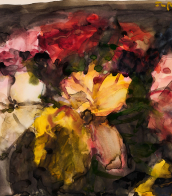

Ewald Wilhelm Hubert Mataré was a German painter and sculptor, who dealt with, among other things, the figures of men and animals in a stylized form.
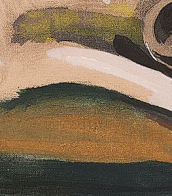
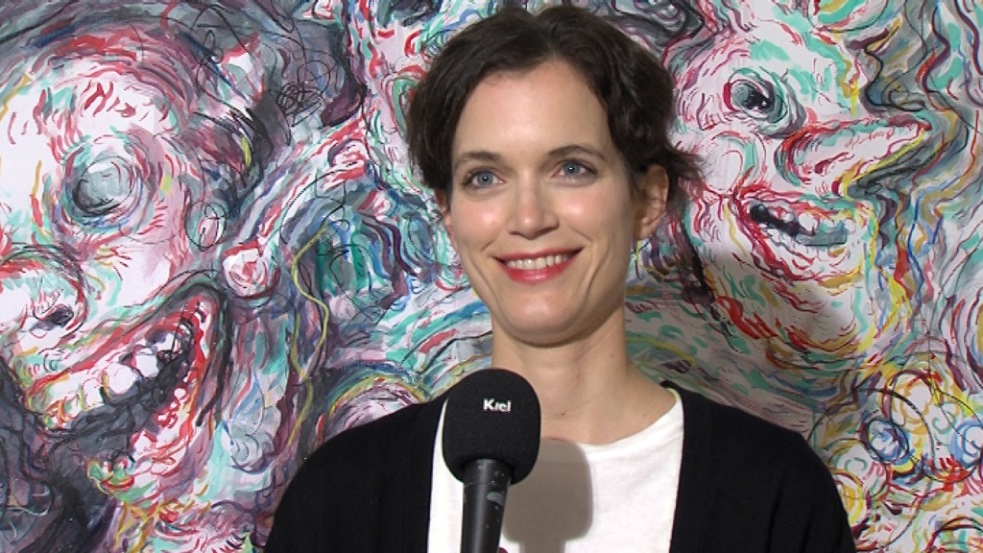
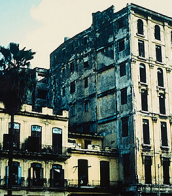



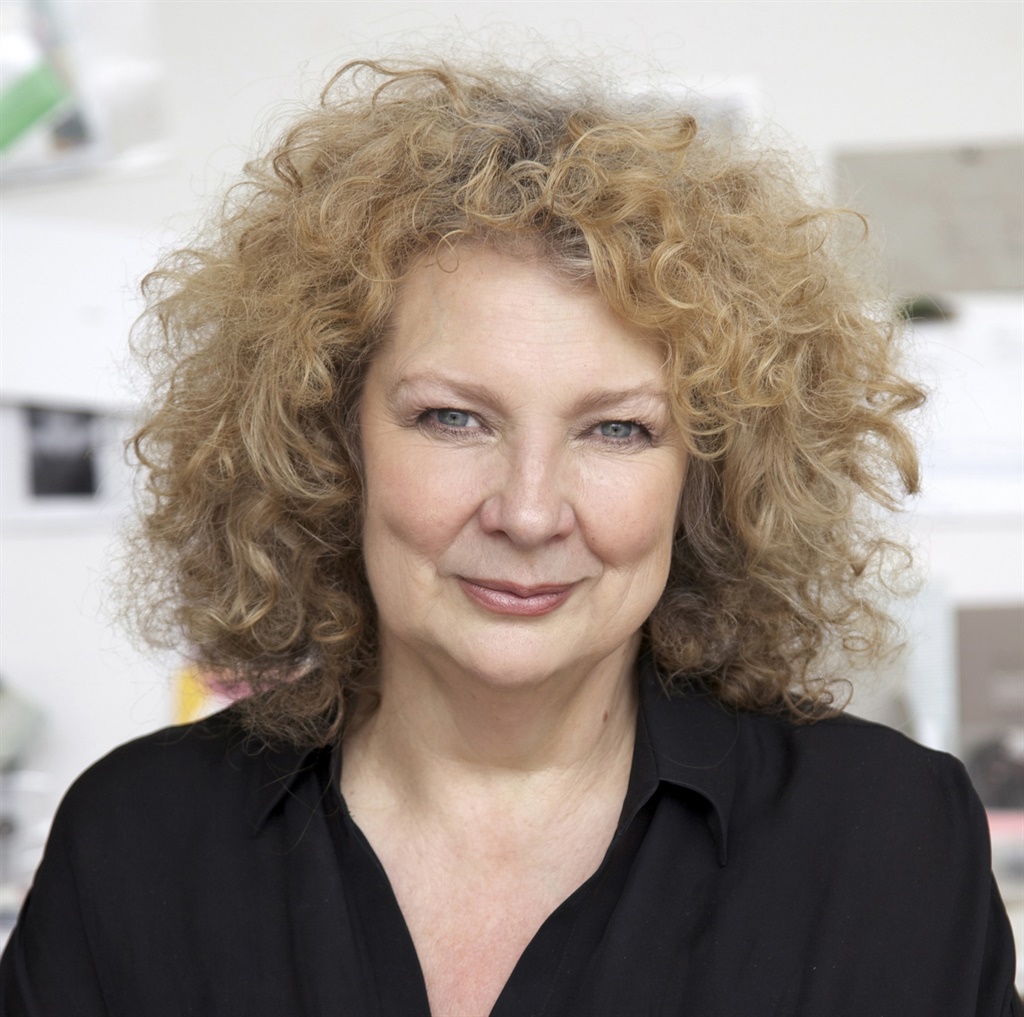
Marlene Dumas is a Dutch artist of South African origin. She is known for her figurative paintings that explore themes of identity, race, gender, and sexuality.
Dumas studied at the University of Cape Town and later moved to the Netherlands, where she earned a degree from the Ateliers '63 in Haarlem. Her early work was heavily influenced by the political and social climate in South Africa during the apartheid era.
Dumas' paintings often depict people in various states of vulnerability, intimacy, and emotion. Her works are characterized by loose, gestural brushstrokes, and a limited color palette. She frequently draws inspiration from popular culture, news media, and art history, often appropriating and reimagining images from these sources.
Dumas has exhibited her work extensively, including at the Museum of Modern Art in New York, the Stedelijk Museum in Amsterdam, and the Tate Modern in London. She has also received numerous awards and honors for her work, including the Johannes Vermeer Award in 2012 and the Premium Imperiale in 2018.
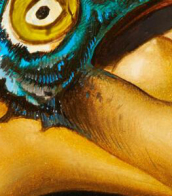

Emil Nolde, a German-Danish artist, stands out as a pivotal figure in the Expressionist movement, celebrated for his vibrant use of color and dynamic brushwork. Born on August 7, 1867, Nolde was initially self-taught, developing a style that later became synonymous with expressive use of color and form. His early work included religious themes and landscapes, characterized by their emotional intensity and innovative color palette. Nolde's contributions to art were not limited to painting; he also excelled in printmaking, creating a significant body of work that includes etchings, woodcuts, and lithographs.
One of Nolde's most noteworthy periods was his time spent on the Baltic Sea island of Alsen from 1903 to 1916, where he produced seascapes that captured the natural world's dynamic essence. His painting "Meer Bei Alsen" (Sea Off Alsen) is a testament to this period, showcasing his ability to convey movement and emotion through color. Furthermore, Nolde's fascination with religious and mythological themes is evident in works like "Dance Around the Golden Calf," where he employs vivid colors and expressive figures to explore complex narratives.
Despite his artistic achievements, Nolde's life was not without controversy. During the Nazi regime, his work was labeled "degenerate," and he faced significant professional and personal challenges. Nonetheless, Nolde continued to create, producing a series of watercolors known as the "Unpainted Pictures" during this time. After World War II, Nolde's reputation was rehabilitated, and he was once again celebrated as a leading figure in modern art.
Nolde's legacy is preserved at the Nolde Foundation Seebüll, a museum dedicated to his life and work, established in the year of his death, 1956. His influence on the field of modern art, particularly within Expressionism, is undeniable, with his bold approach to color and form inspiring subsequent generations of artists.
For art collectors and experts, Nolde's work offers a compelling study in the evolution of modern art, reflecting the tumultuous times he lived through and his unyielding dedication to artistic expression. His ability to capture the essence of his subjects, from the natural beauty of the sea to the depths of human emotion, makes his work a valuable addition to any collection.
To stay updated on sales and auction events related to Emil Nolde's work, signing up for updates is recommended. This subscription service ensures you're informed about the latest opportunities to acquire pieces by this influential artist.

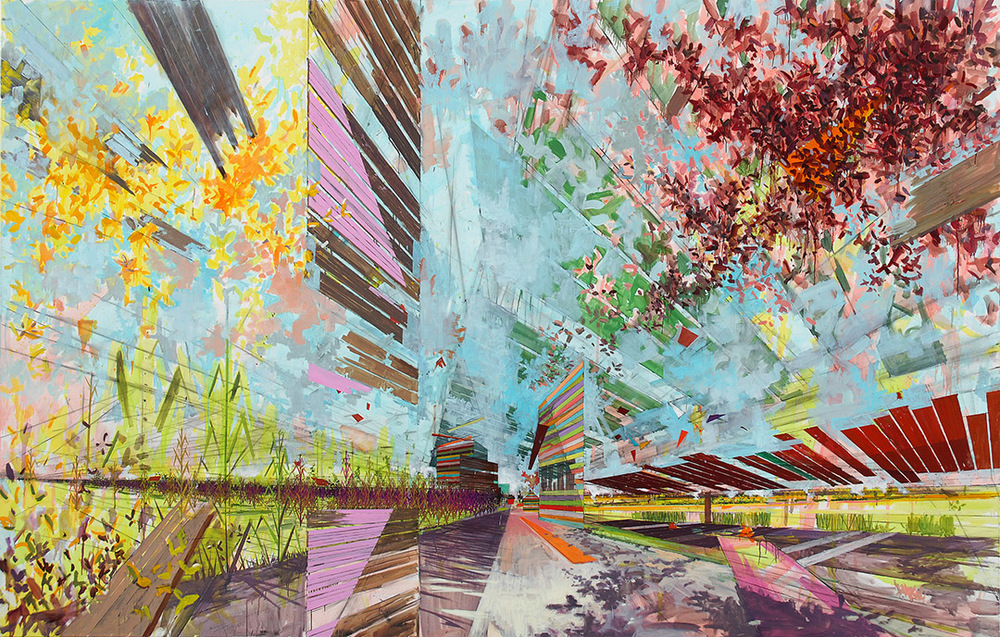
David Schnell is a celebrated figure in contemporary art, well-known for his dynamic and immersive landscapes that blur the lines between natural and constructed environments. Educated at the Hochschule für Grafik und Buchkunst in Leipzig, Schnell's artistry flourished under the tutelage of Arno Rink, aligning him with the influential New Leipzig School. This affiliation situates him among the vanguards of a movement that revitalizes painting with fresh perspectives and conceptual depth.
David Schnell's works are characterized by their deep perspective and a unique blend of culture and nature, often incorporating elements that evoke a sense of fluidity and transformation within his landscapes. This approach not only invites viewers to become part of the artwork but also challenges them to contemplate the dualities of construction and destruction within the landscapes presented. His exhibitions, such as "Hover" in collaboration with the Mönchehaus Museum für Moderne Kunst and Museo de Arte de Ponce, showcase his ability to transform landscapes into grand art,.
Recent works and exhibitions, including his pieces "Ton" (2018) and "Kalender" (2017/2021), further exemplify David Schnell's mastery in painting, demonstrating his continuous exploration of space, time, and perception through large-scale oil on canvas. His artworks, such as "Schleuse" (2022), "Quartier" (2017), and "Abschied" (2023), fetch significant appreciation in the art market, reflecting both his critical acclaim and commercial success.
For collectors and experts in art and antiques, David Schnell represents a compelling convergence of traditional painting techniques and contemporary thematic exploration. His work not only honors the legacy of landscape painting but also propels it into the contemporary discourse with innovation and introspection.
Stay updated on David Schnell's latest exhibitions, artworks, and sales by subscribing to updates from galleries and art platforms that feature his work. This subscription ensures that enthusiasts are always informed about the latest developments and opportunities related to Schnell's evolving body of work.


David Schnell is a celebrated figure in contemporary art, well-known for his dynamic and immersive landscapes that blur the lines between natural and constructed environments. Educated at the Hochschule für Grafik und Buchkunst in Leipzig, Schnell's artistry flourished under the tutelage of Arno Rink, aligning him with the influential New Leipzig School. This affiliation situates him among the vanguards of a movement that revitalizes painting with fresh perspectives and conceptual depth.
David Schnell's works are characterized by their deep perspective and a unique blend of culture and nature, often incorporating elements that evoke a sense of fluidity and transformation within his landscapes. This approach not only invites viewers to become part of the artwork but also challenges them to contemplate the dualities of construction and destruction within the landscapes presented. His exhibitions, such as "Hover" in collaboration with the Mönchehaus Museum für Moderne Kunst and Museo de Arte de Ponce, showcase his ability to transform landscapes into grand art,.
Recent works and exhibitions, including his pieces "Ton" (2018) and "Kalender" (2017/2021), further exemplify David Schnell's mastery in painting, demonstrating his continuous exploration of space, time, and perception through large-scale oil on canvas. His artworks, such as "Schleuse" (2022), "Quartier" (2017), and "Abschied" (2023), fetch significant appreciation in the art market, reflecting both his critical acclaim and commercial success.
For collectors and experts in art and antiques, David Schnell represents a compelling convergence of traditional painting techniques and contemporary thematic exploration. His work not only honors the legacy of landscape painting but also propels it into the contemporary discourse with innovation and introspection.
Stay updated on David Schnell's latest exhibitions, artworks, and sales by subscribing to updates from galleries and art platforms that feature his work. This subscription ensures that enthusiasts are always informed about the latest developments and opportunities related to Schnell's evolving body of work.


Marc Chagall (Russian: Марк Заха́рович Шага́л), born Moishe Shagal in 1887 near Vitebsk, Belarus (then part of the Russian Empire), was a Belarusian and French artist celebrated for his pivotal role in the avant-garde movement and his unique integration of Eastern European Jewish culture into modern art. His contributions spanned several artistic formats including painting, stained glass, stage sets, ceramics, tapestries, and fine art prints. Chagall's early modernist tendencies were enriched by his experiences across Saint Petersburg, Paris, and Berlin before World War I, leading to a distinctive style that melded Cubism, Symbolism, and Fauvism with his Jewish heritage.
Chagall's work is recognized for its emotional depth, often exploring themes of love, memory, and Jewish folklore through vibrant colors and dreamlike imagery. Notably, art critic Robert Hughes described him as "the quintessential Jewish artist of the twentieth century," a sentiment echoed by art historian Michael J. Lewis who regarded Chagall as a significant figure within European modernism and as the world's preeminent Jewish artist of his time.
Among Chagall's famed contributions are his stained-glass windows for the cathedrals of Reims and Metz, the UN, and the Jerusalem Windows in Israel. His monumental paintings include parts of the ceiling of the Paris Opéra and works that explore biblical themes, a hallmark of his oeuvre that underscores his enduring engagement with spiritual and religious motifs.
For art collectors and antiques experts, Chagall's works are notable not only for their artistic innovation but also for their rich cultural and historical significance. His art is housed in many prestigious museums worldwide, including the Marc Chagall National Museum in Nice, France, which focuses on his works inspired by religion and houses the series of paintings illustrating the biblical message.
For those interested in exploring Chagall's legacy and the vibrant intersection of culture, art, and history his work represents, signing up for updates on new product sales and auction events related to Marc Chagall can provide invaluable insights and opportunities. This is an invitation to engage more deeply with the world of art and culture that Chagall so uniquely encapsulated in his work.

